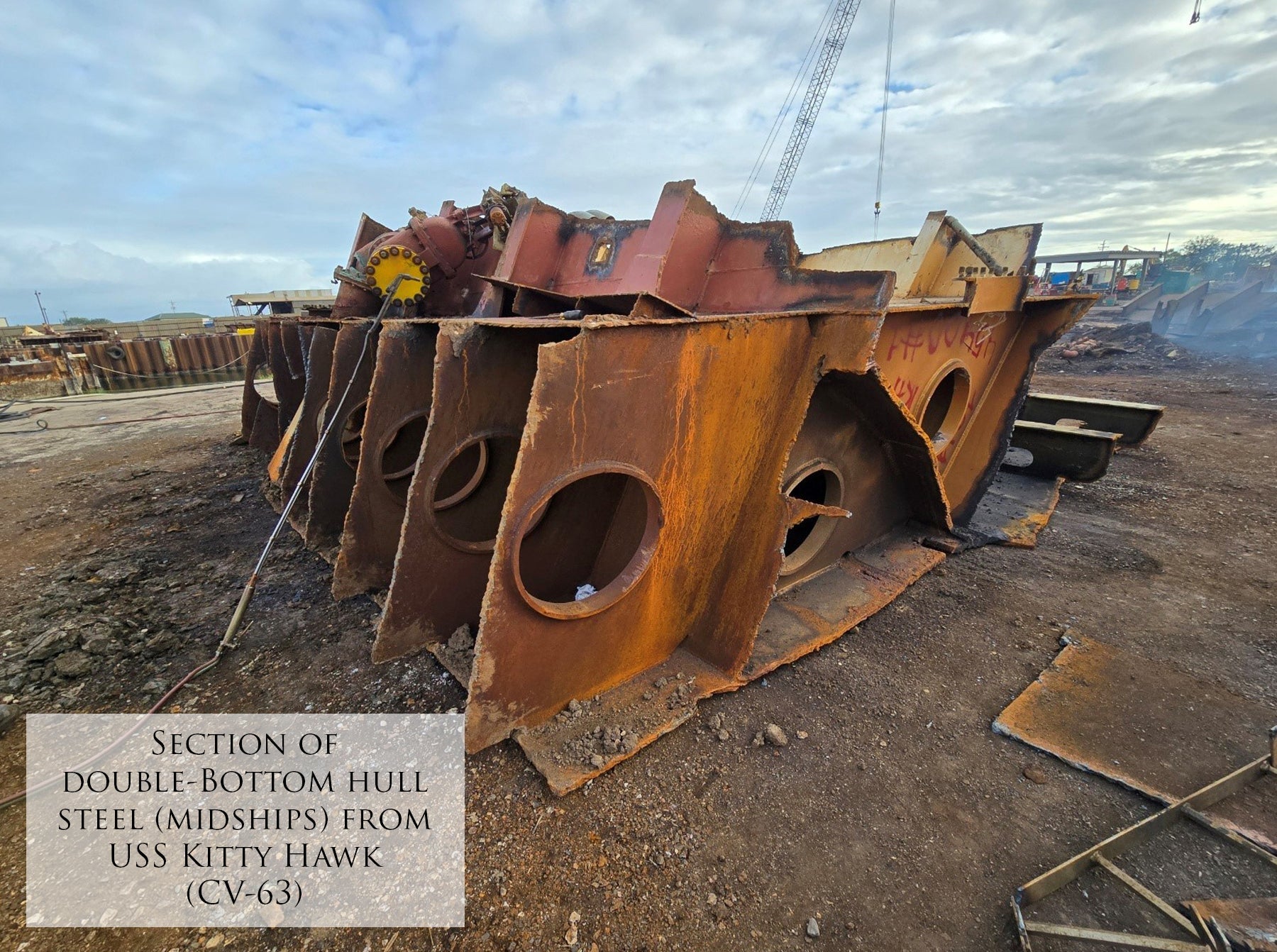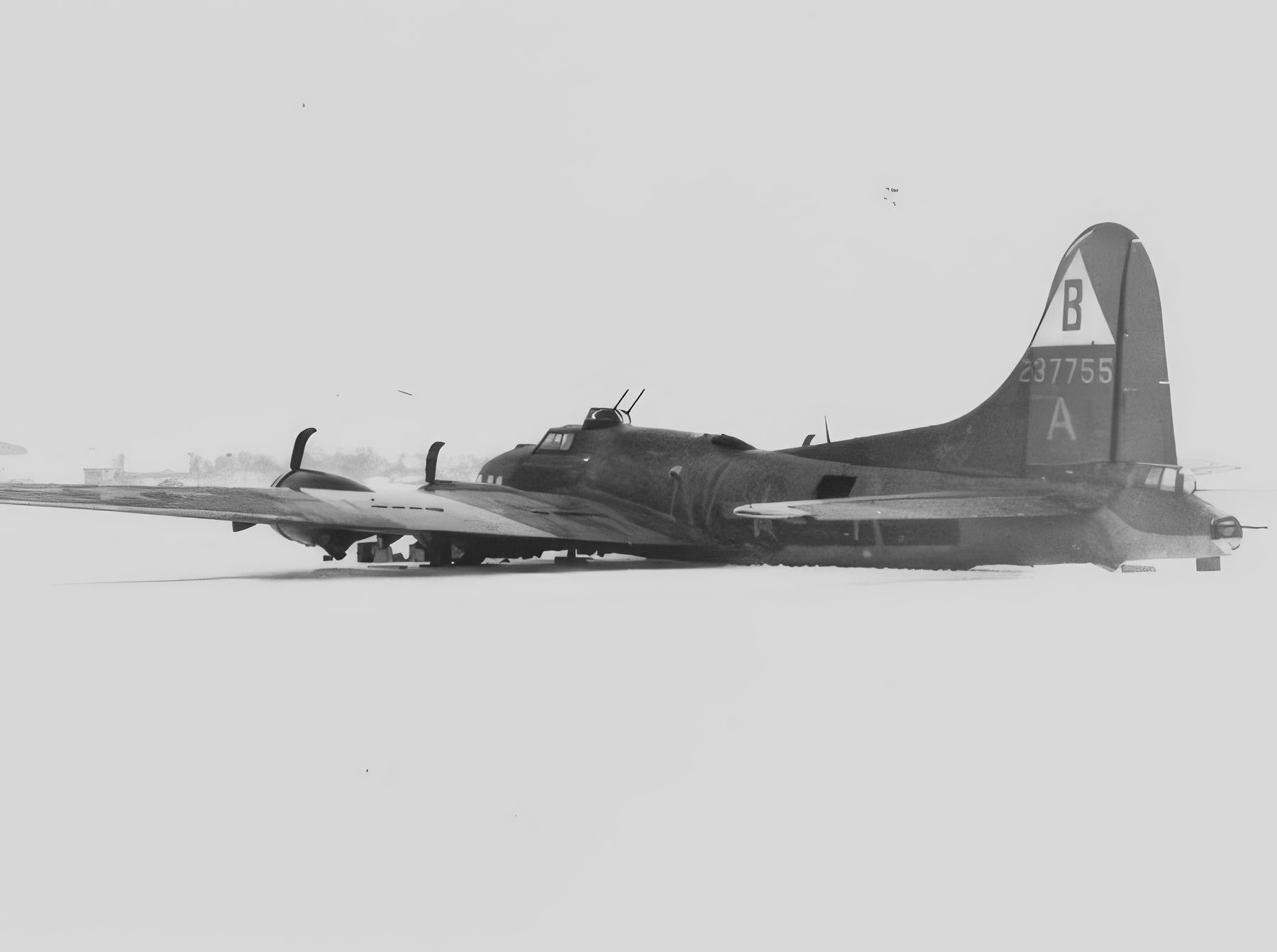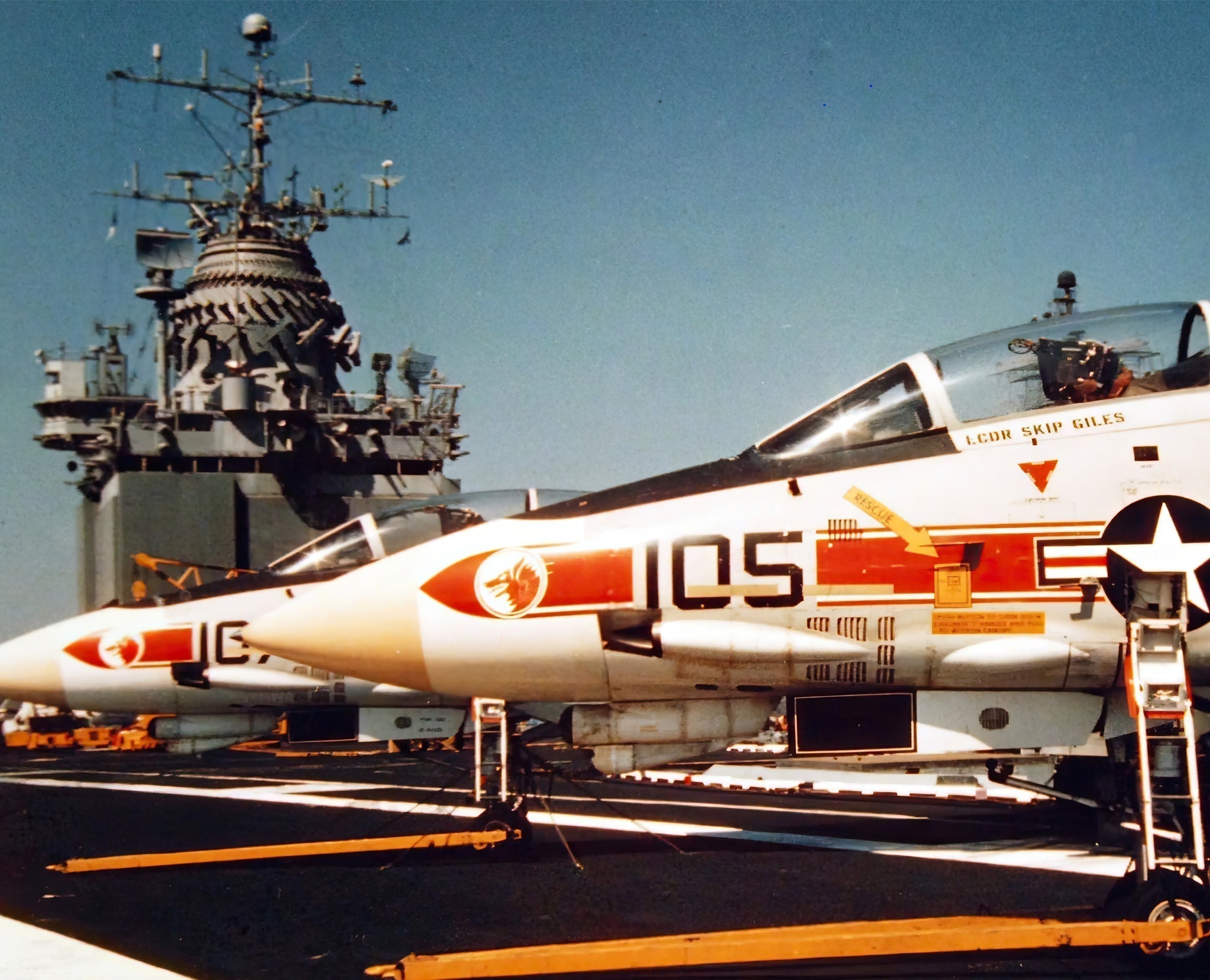This Fine Art Print by Artist Craig Tinder depicts Robert J. Faber of the 16th Fighter-Interceptor Squadron over Mt. Fuji during the Korean conflict. This Limited Edition Canvas Print includes an actual fragment from an F-86D Sabre from the Davis-Monthan Air Force Base in Tuscon, AZ.
Details About the RELIC:
This relic comes from the wing access panel of an F-86D "Sabre Dog" (Part No. 165-142681), a variant of the legendary F-86 Sabre series that was modified specifically for all-weather, interceptor missions during the Cold War. The F-86D was equipped with advanced radar systems and a distinctive nose-mounted radar cone, making it a critical part of the U.S. Air Force's defense against potential Soviet bomber threats. The panel was salvaged prior to the scrapping of the aircraft at the 309th AMARG Aircraft Boneyard at Davis-Monthan Air Force Base in Tucson, Arizona, which is the largest aircraft storage and preservation facility in the world.
 Wing access panel that is used as the relic included in the "Tomahawk Patrol" limited edition prints
Wing access panel that is used as the relic included in the "Tomahawk Patrol" limited edition prints
The F-86D was developed to counter high-speed, high-altitude bombers with its advanced onboard radar and air-to-air rockets housed in a retractable tray. It played an important role in the 1950s and early 1960s as part of the Air Defense Command (ADC), ensuring the safety of U.S. airspace during the tense years of the Cold War.
 Artist, Craig Tinder, with the relic and "Tomahawk Patrol" limited edition prints
Artist, Craig Tinder, with the relic and "Tomahawk Patrol" limited edition prints
This access panel, now preserved as a relic, represents a piece of aviation history, offering a direct connection to the cutting-edge aircraft technology of the time and the strategic efforts to protect U.S. airspace during a period of high global tension. The 309th AMARG, where the F-86D was stored and ultimately scrapped, continues to serve as a vast repository of retired military aircraft, each with a unique history of service and significance.
The Story Behind the Print:
Flying high above Mt. Fuji during the Korean War, 1st Lt. Robert J. Faber piloted the F-86D Sabre Dog of the 16th Fighter-Interceptor Squadron. Unlike the original F-86 Sabre designed for daylight combat, the F-86D was created as an all-weather interceptor. This version featured only 25% shared parts with its predecessor and was initially developed under the designation YF-95 before being re-designated to F-86D. Equipped with the AN/APG-36 all-weather radar housed in its distinctive nose radome, the Sabre Dog was invaluable in providing aerial defense in adverse weather conditions over the Sea of Japan, enabling operations when other U.S. fighters were grounded.
 Artist, Craig Tinder, with the relic and "Tomahawk Patrol" limited edition prints
Artist, Craig Tinder, with the relic and "Tomahawk Patrol" limited edition prints
Although no photographs of 1st Lt. Faber’s actual Sabre aircraft have been discovered, the family preserved a model of the plane that their father had commissioned. Using this model and squadron photos, artist Craig Tinder meticulously recreated Lt. Faber’s aircraft for a commemorative art print. This artwork ensures that future generations can appreciate the legacy of 1st Lt. Faber and the innovative technology of the F-86D, which helped maintain aerial superiority during the Korean War.
 Model of Faber's F-86D Sabre
Model of Faber's F-86D Sabre
 F-86D Sabre
F-86D Sabre
The print, released during a special event at the Aces in Action gallery, celebrates both the contributions of Lt. Faber and the other brave pilots who flew the F-86D to protect the skies in one of the most challenging air campaigns of the Cold War.
 The Faber family attending the unveiling of "Tomahawk Patrol" at Aces In Action
The Faber family attending the unveiling of "Tomahawk Patrol" at Aces In Action
Learn more about Can the F-86 go Supersonic? Click Here
To purchase or see similar items, visit here.
Commissioned by Museums, Treasured by Collectors





Share:
The People's Fighter, the story behind "Contested Victory"
Wings of Speed, the story behind "The Time Machine"